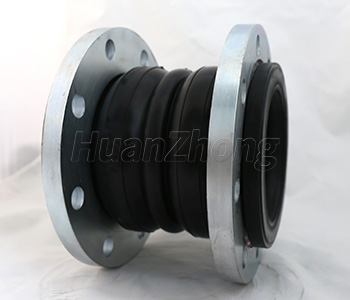Maintenance and application of flexural rubber joints
Maintenance and application of flexural rubber joints
In our daily life we often see bendable rubber joints, its appearance has brought us great convenience, but how do we maintain it in the daily? And what is the scope of its application? The following staff will give you a brief introduction to the relevant knowledge points.
Notes on the installation of rubber joints: When installing rubber joints in pipelines, they must be left in their natural state, do not artificially deform their rubber joints; when the pipeline medium is resistant to acid and alkali, oil, high temperature and other special materials should be selected higher than the working pressure of the pipeline by one stop.
The flange connecting the rubber joint should be a valve flange or a flange conforming to GB/T115.1(RF). The normal medium of rubber joints is ordinary water with the temperature of 0-60℃. In case of special medium such as oil, alkali, high temperature and other corrosive and hard texture, the corresponding special resistant material rubber joints should be selected, not to be used blindly in series or in general. When the rubber joint is used in the import and export of water pump, it should be located on the water source side, and the metal reducer joint should be installed between the water source and the large diameter out of the reducer.
When the pipeline displacement is greater than or equal to the compensation amount of the joint, the number of joints should be increased to parallel the displacement amount. It is strictly forbidden to make the joint at the limit of flexural displacement and deviation in order to adjust the super difference of the pipeline, not to mention the super limit (expansion, displacement, offset, etc.) of high-level water supply or suspended water supply, the pipeline should be fixed on the hanger, bracket or anchor frame, and the joint should not be allowed to bear the weight of the pipeline itself and axial force, otherwise the joint should be Equipped with anti-pull-off device. When installing the rubber joint, the screw of the bolt should be extended to the outside of the joint, and the bolt of each flange end face should be tightened evenly repeatedly according to the method of diagonal pressure to prevent pressure deviation.

Cleaning: After use, it is recommended that you empty the flexural rubber flexible joint. If necessary, cleaning should be carried out. Inspection: The flexural rubber flexible joint must be inspected after each use to ensure that there is no structural damage. Pressure: A hydraulic test is recommended if the flexural rubber joint is under severe pressure when in use or if the outer layer of the flexural rubber joint will be in contact with the fluid being conveyed for a long period of time.
